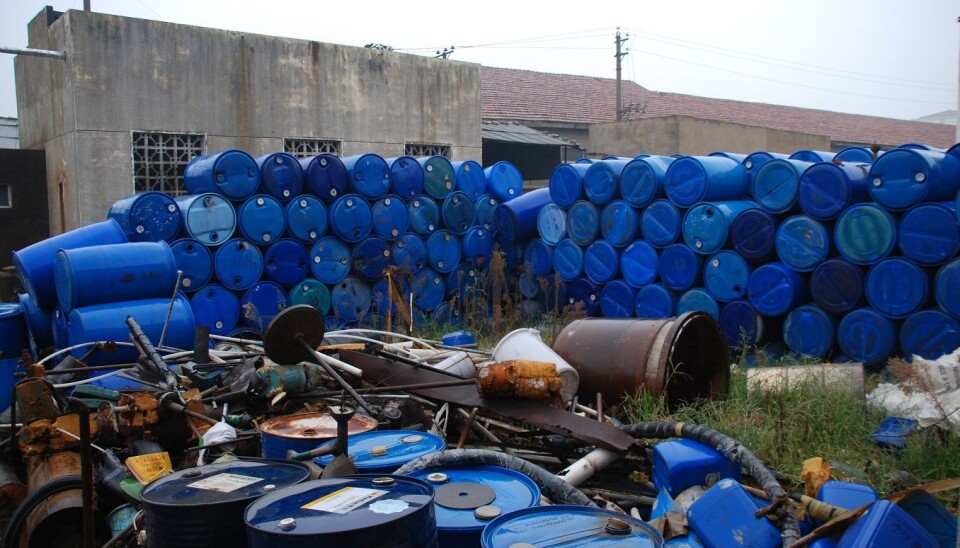An article from NIVA - Norwegian Institute for Water Research

Chemical compound overlooked for 30 years
Researchers recently found a new chemical compound which has evaded the attention of environmental research and regulation for several decades.
Denne artikkelen er over ti år gammel og kan inneholde utdatert informasjon.
The environmental occurrence of a chlorinated polyfluorinated ether sulfonate (locally called F-53B) was discovered by scientists from Tsinghua University in Beijing and NIVA in wastewater from the chrome plating industry in the city of Wenzhou, China.
Similar structures to PFOS
During the electroplating process, especially in “hard chrome plating”, mist suppressants are indispensable for the protection of employees from exposure to the airborne, highly toxic forms of chromium. The most commonly used mist suppressants are based on perfluorooctane sulfonate acid and its salts (PFOS).
The similarity in chemical structures between F-53B and PFOS makes it reasonable to assume that they possess similar physicochemical properties and environmental behavior.
Chrome plating is not the only industry that has made use of the special properties of PFOS and similar compounds, and they have been extensively used in hundreds of manufacturing and industrial applications including the textile, electronic, automotive, construction and chemical processing sectors.
This has resulted in significant emissions, and subsequently the discovery that they are ubiquitously present in the environment, which in turn led to concern regarding the consequences. Thus PFOS has received considerable attention from environmental scientists and has been shown to possess persistent, bioaccumulative and moderately toxic properties, together with the potential for long-range transport.
The Stockholm Convention
Collectively, these issues led to a voluntary phasing out of PFOS by the primary manufacturer in Western countries in 2002, a consequent steep decline in production in those regions, and international controls such as inclusion in the Stockholm Convention. The Stockholm Convention on Persistent Organic Pollutants is an international environmental treaty, signed in 2001 and effective from May 2004, that aims to eliminate or restrict the production and use of persistent organic pollutants (POPs).
Over 170 countries, including China, have ratified the Convention. Due to this reason, F-53B as a PFOS alternative may be expected to obtain a larger market share and potentially expand from being solely used by the metal plating industry to other industries that currently use PFOS.
Moderately toxic and as resistant as PFOS
Scientists from Tsinghua University took samples from surface water the industrial wastewater, in the municipal wastewater treatment plant, and from Ouijang River, at Wenzhou city, which receives the treated wastewater.
Both PFOS and F-53B was found in high concentrations in wastewater from the chrome plating industry, and were not successfully removed by the treatments in place. Consequently, it was also detected in the surface water that receives the treated wastewater at similar levels to PFOS. Initial data presented in the report suggests that F-53B is moderately toxic and is as resistant to degradation as PFOS.
Could be found in consumer products
The researchers do note that such a limited sampling regime is not sufficiently robust to ascertain the environmental fate of F-53B, but these preliminary results suggest that it will be similar to that of PFOS.
- First, this shows that we must not assume that the suite of industrial compounds used in developing countries is necessarily the same as those used in the West, says Christopher Harman, researcher at NIVA.
- This may well have consequences for many compound groups, which may find their way into consumer products we buy.
- Second, the existence and use of this compound for decades – which seems to have evaded the attention of environmental research and regulations – reminds us that we don't fully understand the full extent of environmental contamination of these types of compounds in the environment.

































